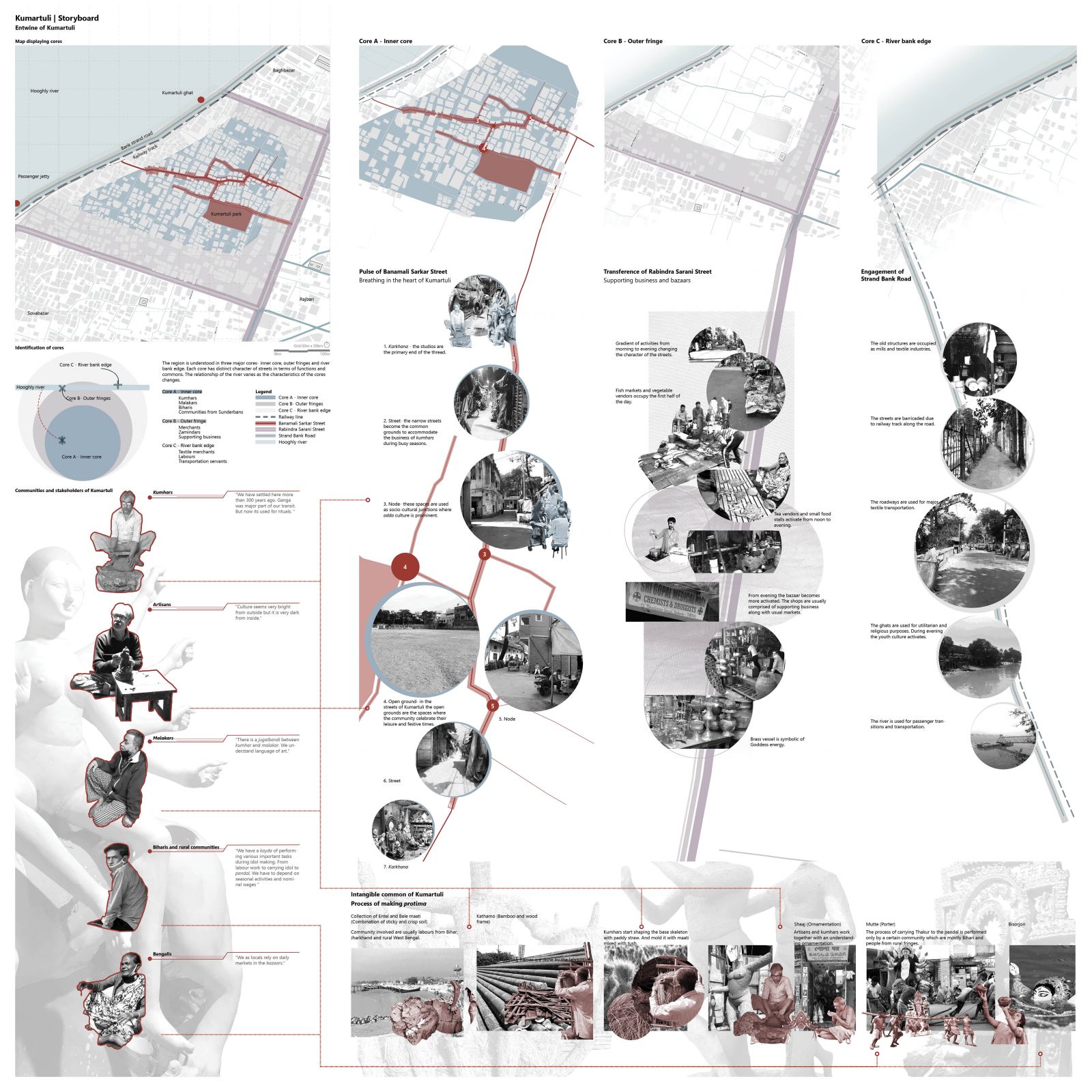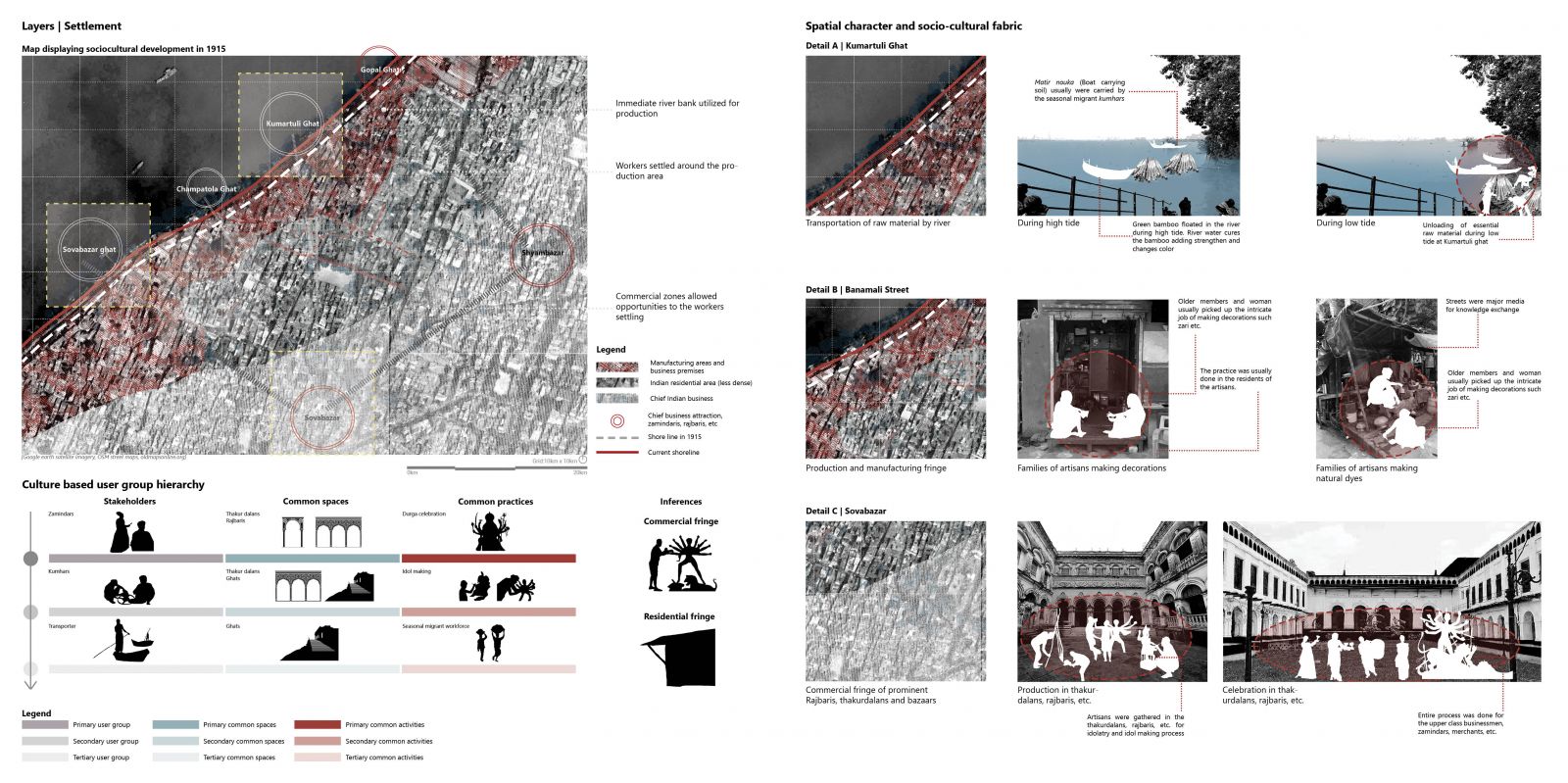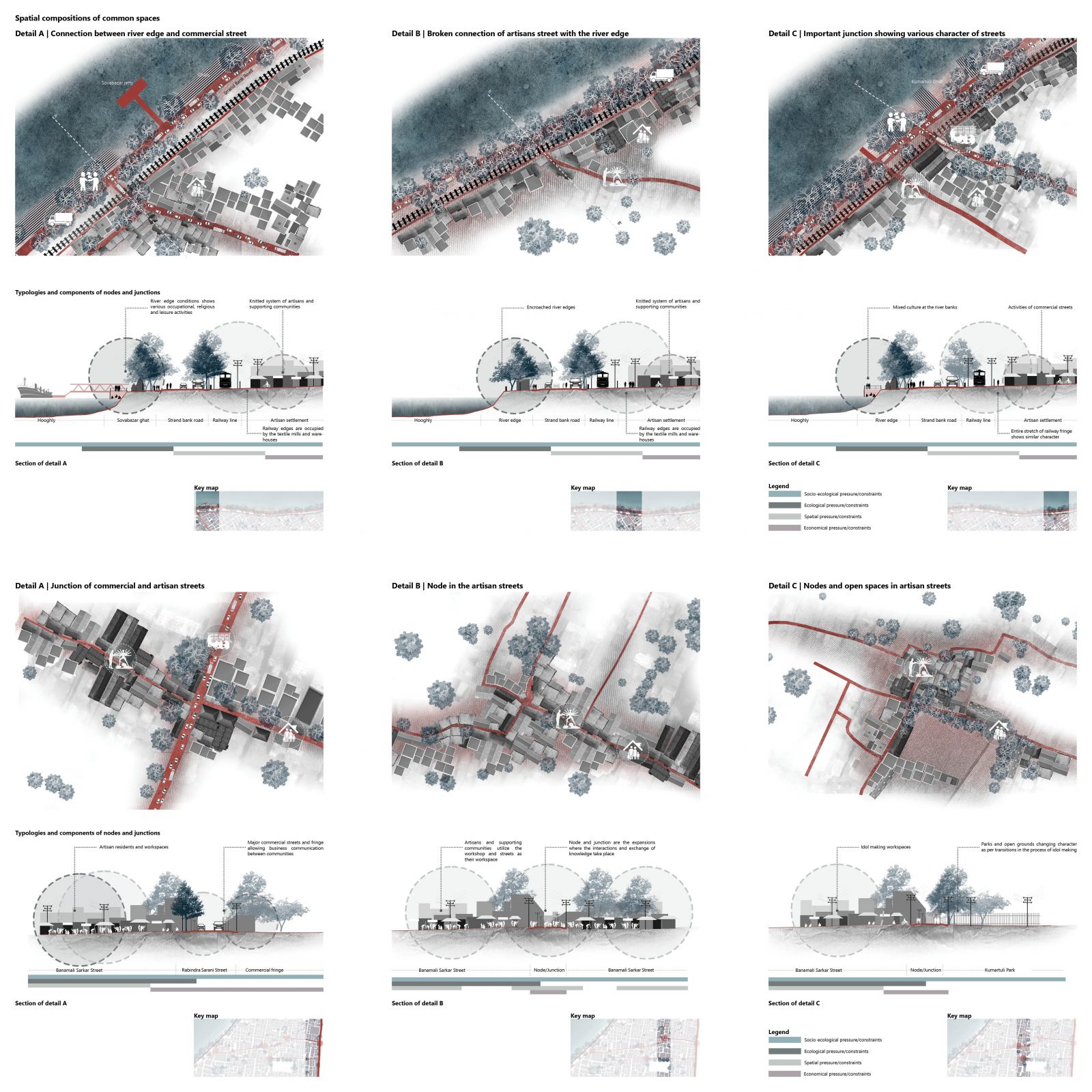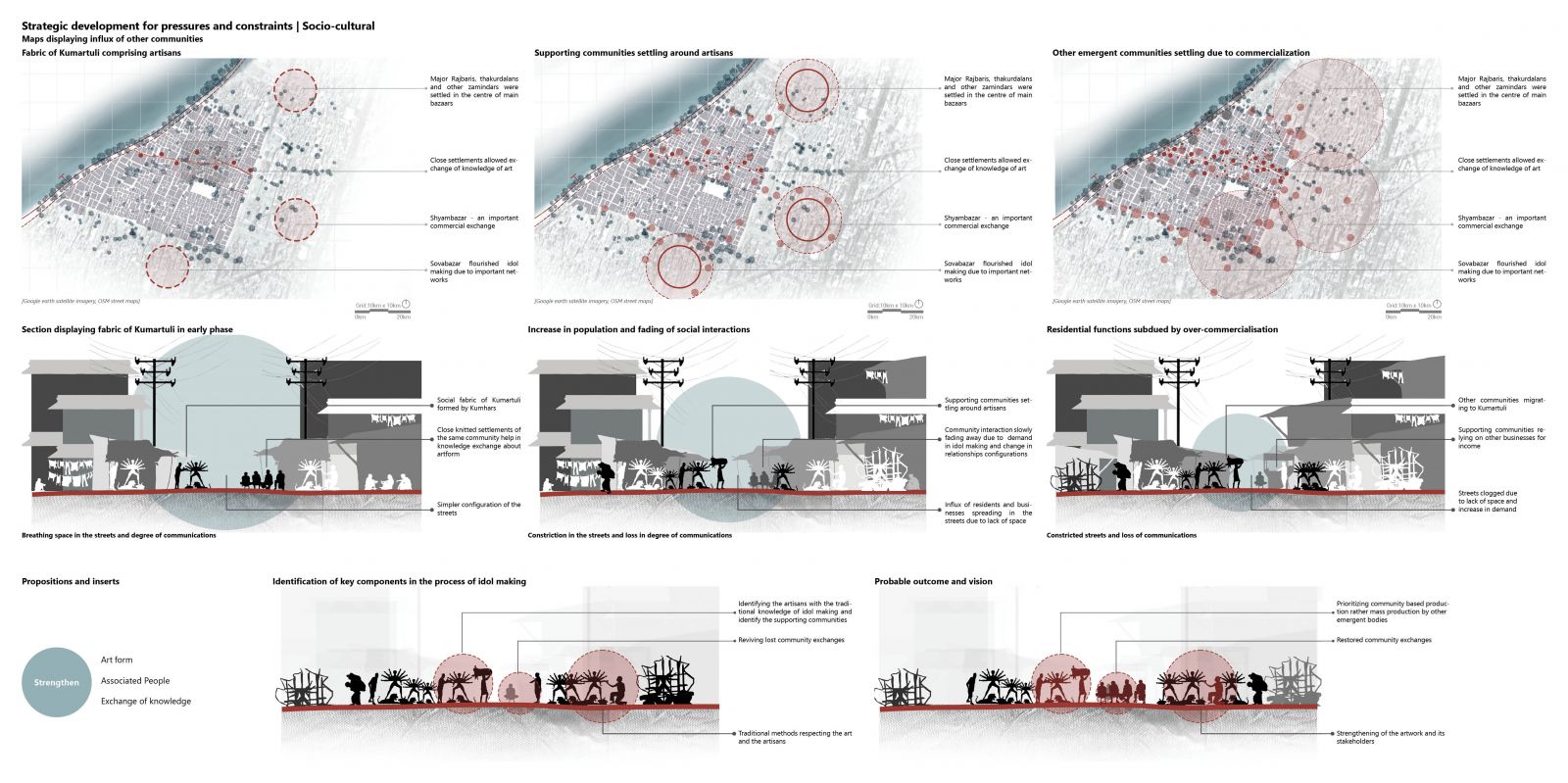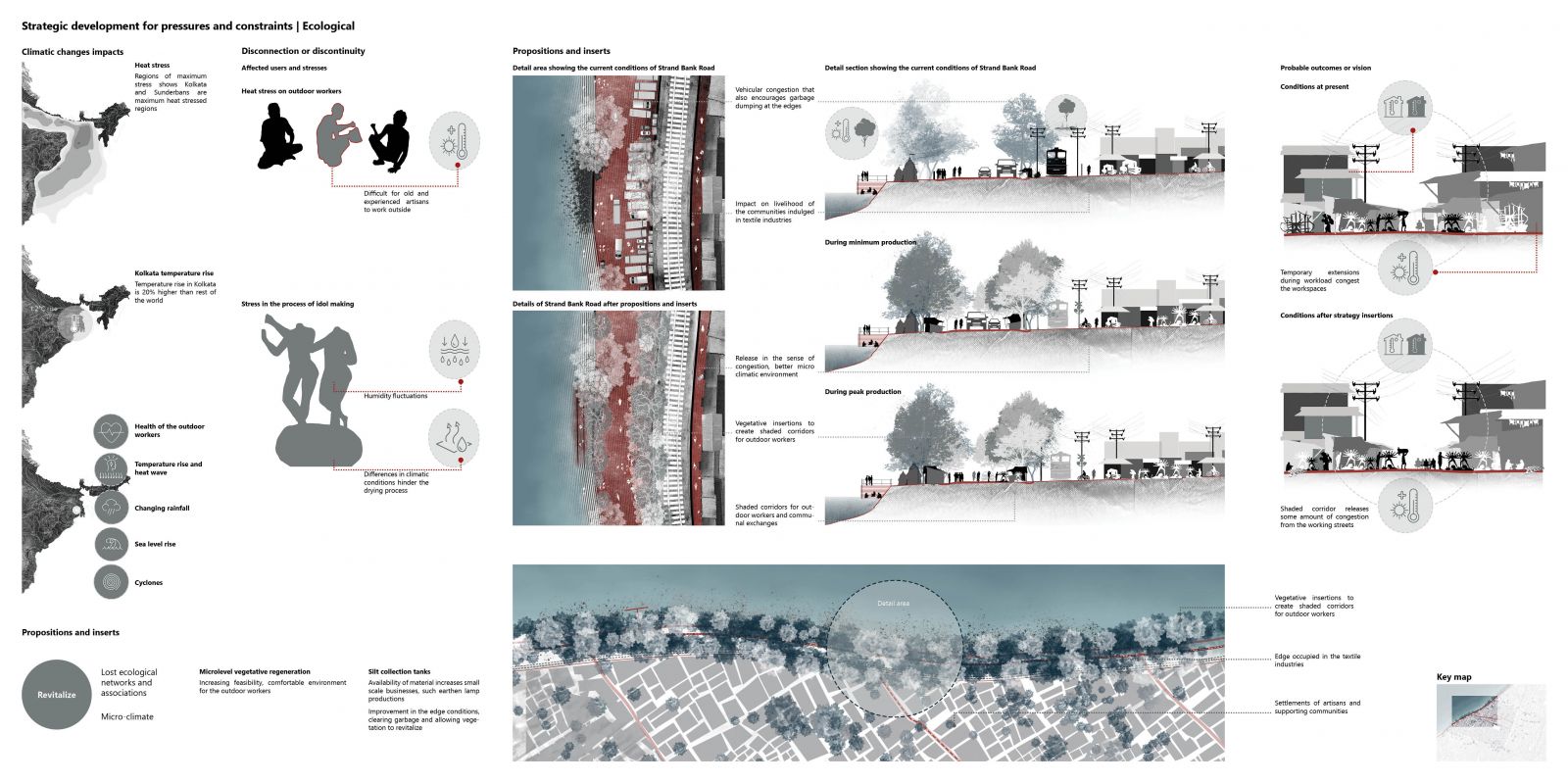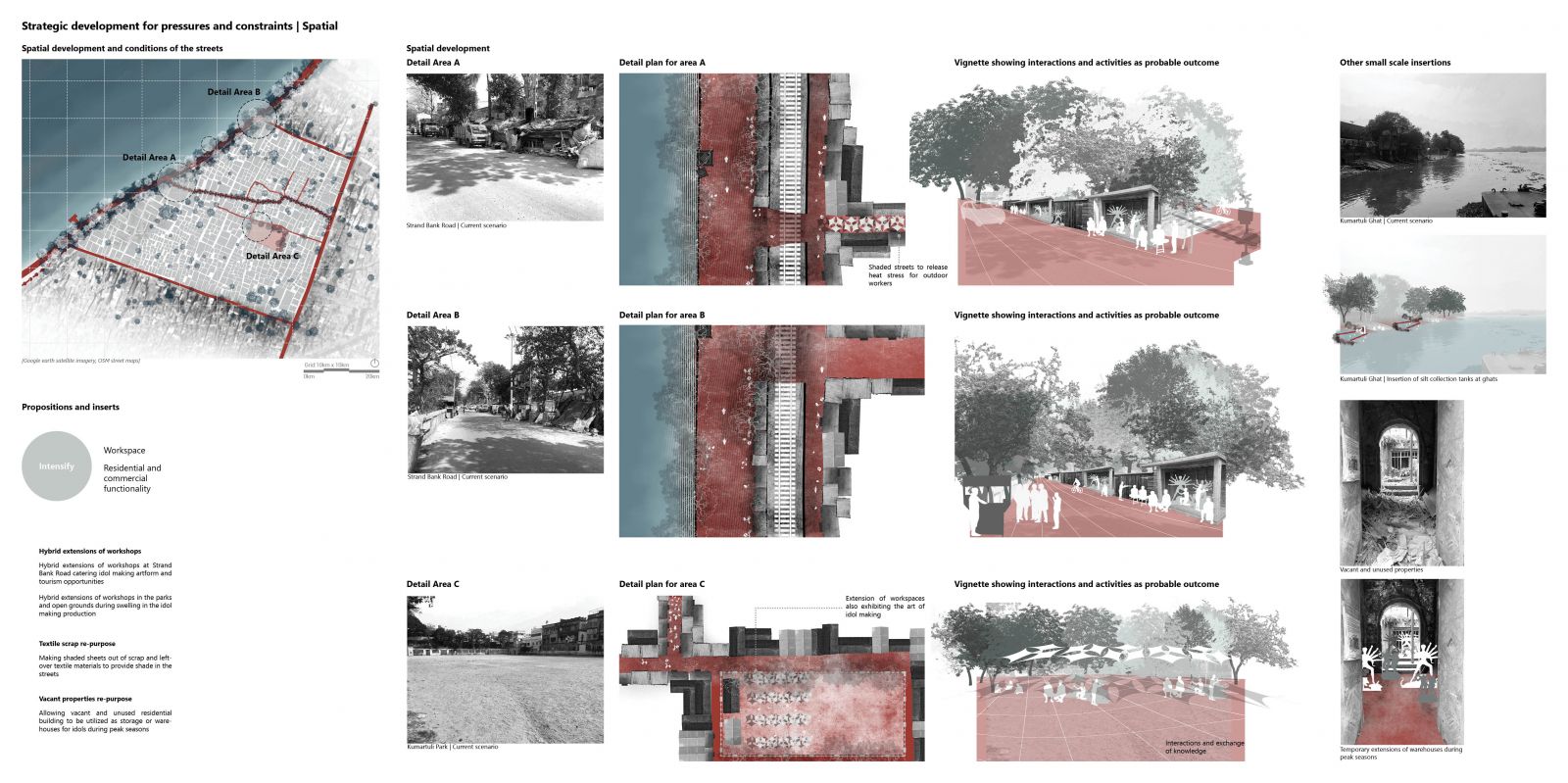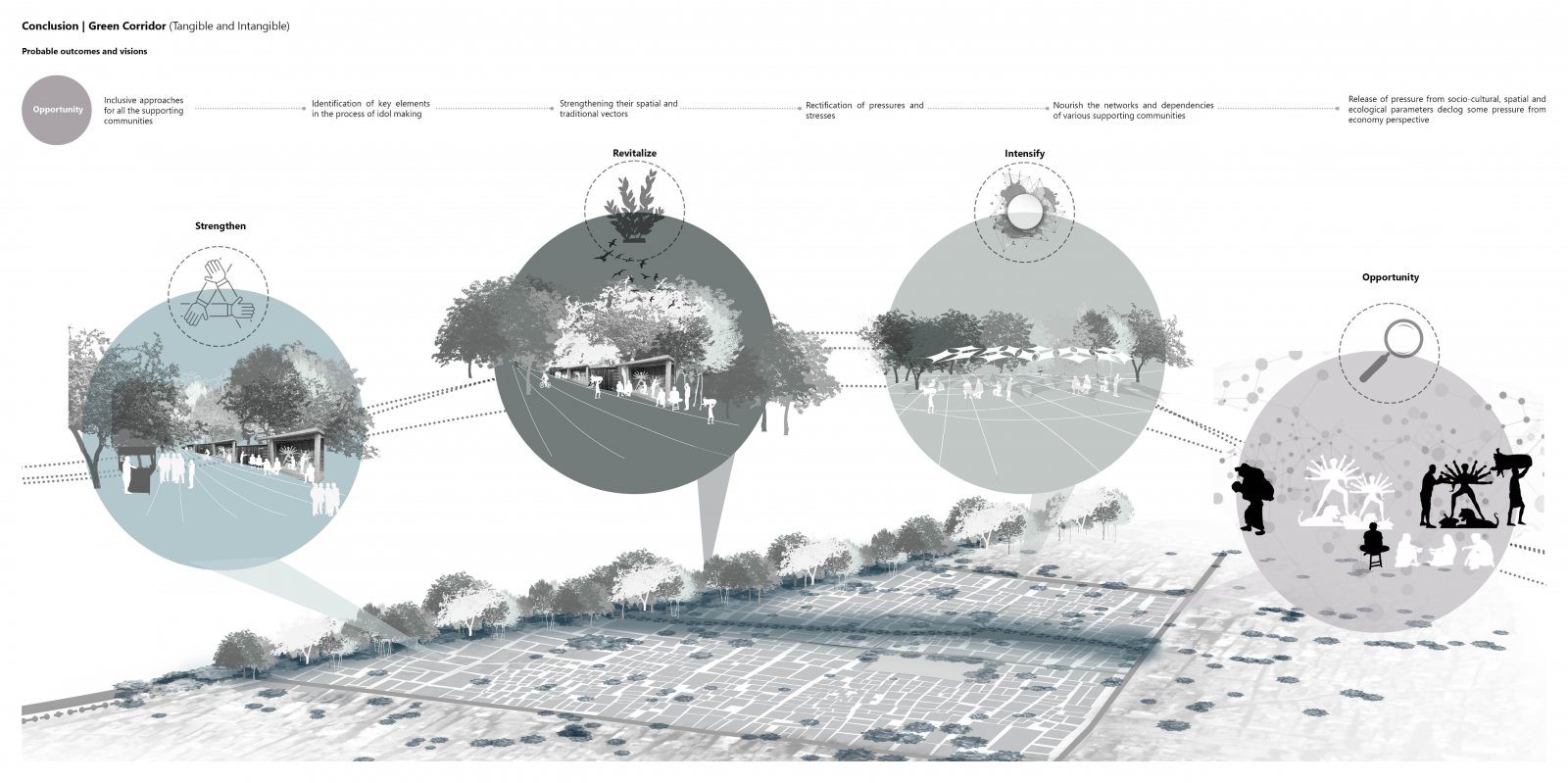Your browser is out-of-date!
For a richer surfing experience on our website, please update your browser. Update my browser now!
For a richer surfing experience on our website, please update your browser. Update my browser now!
The project is observed from the lens of idol making and its associated stakeholders in the streets of Kumartuli. From the interactions and ground truthing in the intense artisan streets of Kumartuli, the region is observed in three cores - the inner core, outer fringes and the river bank edge. The inner core comprises mainly the artisan community, the outer fringes are commercial areas while the river bank edge is more towards manufacturing of clothing and textile oriented business and leisure activities. These cores are very different from each other but are dependent to each other in their unique networks. These networks are intricate and intensely woven. Any change in the link shifts the orientation of these networks and exchanges.The project as a tool looks at the pressure and constraints in the streets of artisans. It identifies the discontinuity and disconnection as a point of inquiry. The frame of green corridor is a tie back to the first impression of the commons. The idea of commons breathing in the cracks and fissures is represented by the streets of Kumartuli. The art of idol making is intangible commons held by tangible commons that are the streets. They symbolically represent the breathing of commons and its lost connection with the river Hooghly. The project aims to integrate the commons and its stakeholders with the idea of reviving the lost connections. The tools for the integration are the keys to the green corridor- Strengthen, Revitalize, Intensify and Opportunity.
View Additional Work
